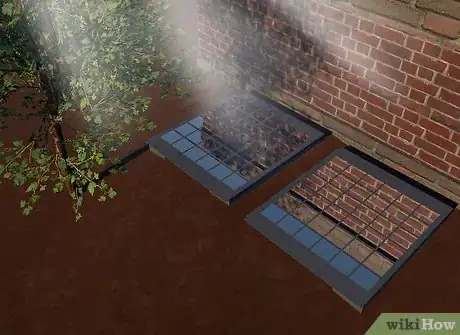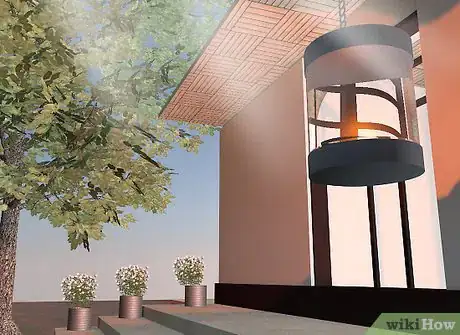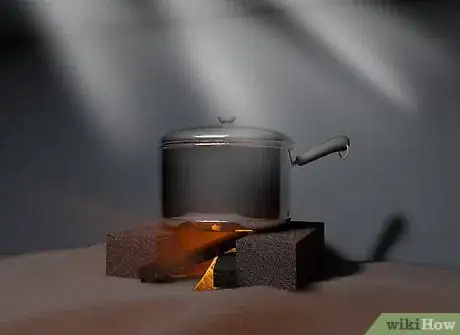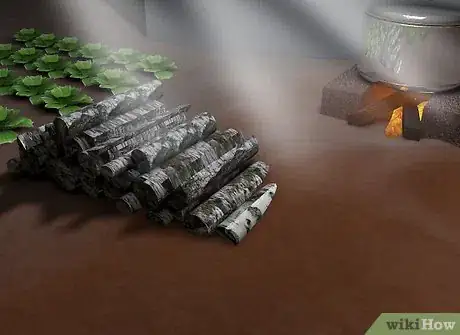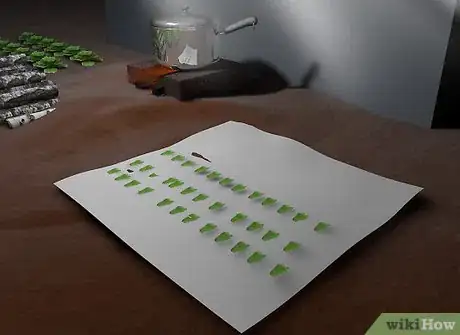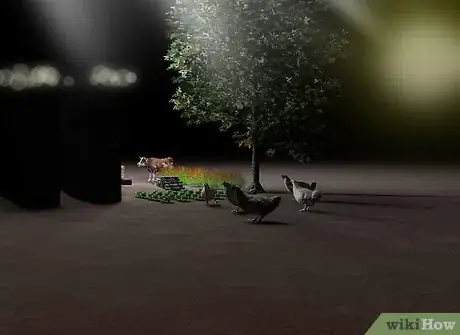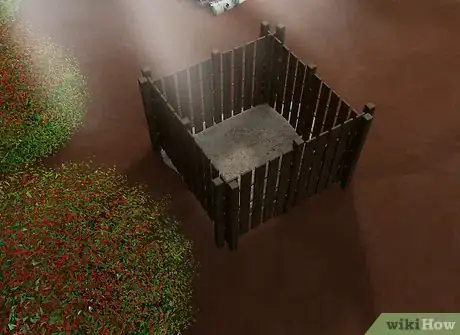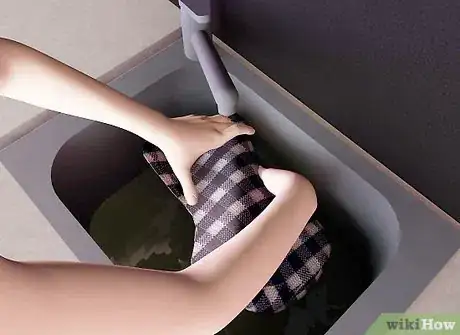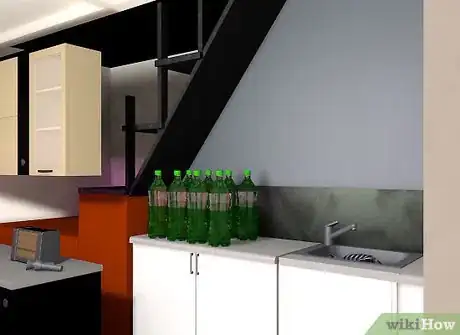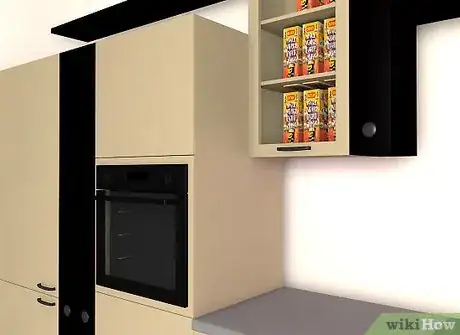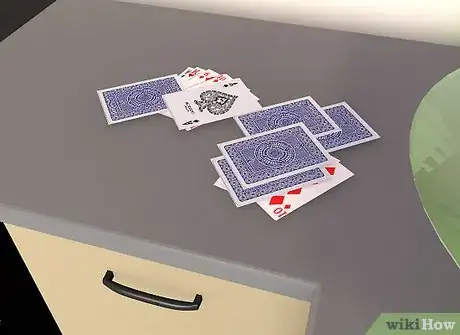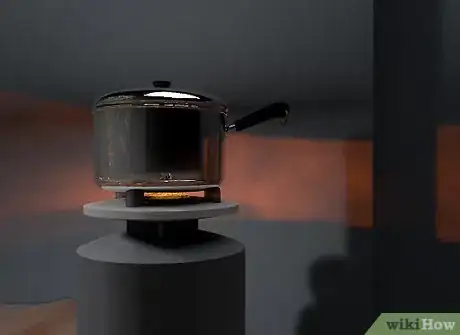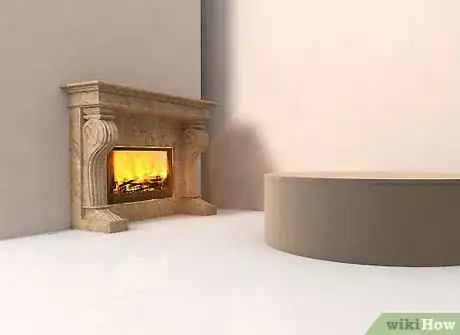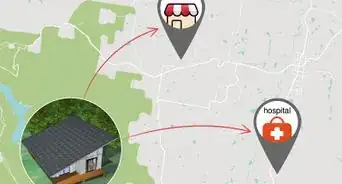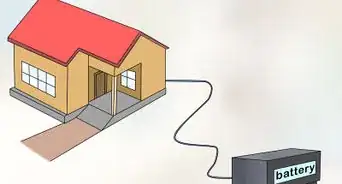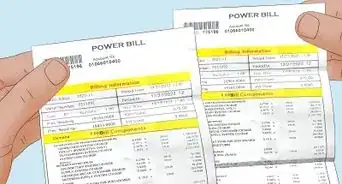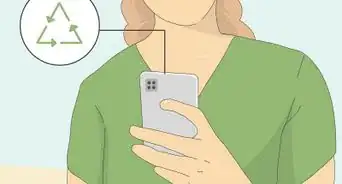This article was co-authored by Guy Gabay. Guy Gabay is a Solar Energy Contractor and the CEO of AmeriGreen Builders, a full-service solar energy, roofing, HVAC and window installation company based in the greater Los Angeles, California region. With over eight years of experience in the construction industry, Guy leads the AmeriGreen team focusing on bringing an educational approach to energy efficient home upgrades. Guy holds a B.S. in Marketing from California State University - Northridge.
There are 8 references cited in this article, which can be found at the bottom of the page.
This article has been viewed 422,325 times.
Whether you are passionate about 'getting off the grid' or simply know that you are going to have to deal with a power outage in the near future, you are going to have to know how to live without electricity. While it might sound unnatural to live without all the electrical items that play a large part in our lives, living without electricity has been something humans have done since the dawn of man. With determination, a positive attitude, and a bit of ingenuity you too can live without electricity, be it for just a day or the rest of your life.
Steps
Going Off the Grid
Part One: Lighting and Heating
-
1Invest in alternative energy. If you are planning on living without electricity, then you are going to have to find other ways to power your home without the help of electricity companies. Renewable energy sources are an excellent way to do this. Install solar panels to harness the power of the sun, build wind turbines, or power your home through a hydropower system. You may also consider installing a generator so you can power your own electric items.[1]
- Make a bicycle generator. Bike generators are both a great way to get exercise and a great way to charge your electronics. You can order the plans for bike generators online, or you can order pre made bike generators.
- You should also consider using alternative fuels like biodiesel, biomass, and Ethanol.
-
2Plan out your lighting system. There are several viable options for how to best light your house. One of the best is the kerosene lantern. You could also use kerosene wick lamps, candles, and battery-charged camping lanterns. It’s also important to have flashlights on hand for when you need to get up in the middle of the night but don’t have any lights to turn on.[2]
- If you decide to get a bicycle generator, you will be able to light your the lamps in your house.
Advertisement -
3Winterize your house. This means adding extra insulation to your house’s walls, particularly in the attic and around doorways. Heat escapes under doorways, around windows and through the upper regions of the house. Create an insulation system that will let as little heat escape as possible. Buy door sweeps to block up the undersides of doors.
- You should also consider using a window insulator kit to block air leaking through your windows. You can either purchase a ready made window insulation kit, or make your own.
-
4Consider central heating. If you do not have a fireplace or wood-burning stove, you should seriously consider building one, especially if you live in a cold climate. To heat other rooms in the house, you can consider building vents onto your fireplace that lead to the other rooms.[3]
Part Two: Cooking
-
1Figure out how you’re going to cook. One of the best ways to cook without using any electricity is to install a wood stove. When it gets too hot to cook over the wood stove, use propane or butane camping stoves (which act exactly like any other gas stove.)
- If you have a gas stove, you can still use it without using electricity. You will just have to light the burners with matches or a lighter.
-
2Plant a garden. Rather than purchasing fruits and vegetables from a store, why not grow your own? With just a few seeds, you can turn your yard into a cornucopia of produce. Growing your crops on your own land will also mean that you have control over what sort of contaminants your food is exposed to.
- Plant crops that will produce fruits and vegetables at different times of the year, that way you have delicious food to eat all year round.
- If you are really serious about growing a lot of crops, you will need to learn about crop rotation. To read more about farming crops in large quantities and crop rotation, click here.
- Plant an herb garden so that you can have fresh and delicious herbs. Dry some of the herbs so that you can use them year round.
-
3Raise livestock. If you have the space to do so, you should consider raising livestock. Cows, goats, and sheep are all excellent dairy sources, chickens provide eggs and meat, and pigs can help you compost as well as provide you with food. You can sell, trade, or keep what your livestock produces.[4]
- Build a chicken coop to house your chickens. Your chicken coop should have room for your chickens to wander around in, as well as some cubby holes where they can lay their eggs.
-
4Learn how to preserve food. A large part of living without electricity is being able to preserve food, even when you don’t have a refrigerator to store it in. Nearly everything can be canned--from fruits and vegetables, to meat and eggs, canning is an excellent way to preserve your fresh produce. If you plan on doing a lot of canning, you should consider purchasing a pressure canner. Pressure canners make the canning process a lot more efficient.
- Pickle other foods that you want to preserve. Pickled food can be great during the winter when fresh food is less available.
- Dry fruits, vegetables and meat. Drying food is also an excellent way to store food without using electricity.
Part Three: Other Off the Grid Basics
-
1Create a compost pile. Compost is incredibly handy, particularly when you do not want to pay for city trash services. Not only will a compost pile help you achieve nutrient rich fertilizer, it is also relatively easy to build.
-
2Make your own fertilizer. It is particularly easy to do this if you raise livestock. Your garden will be particularly grateful to you if you feed it with your own homemade organic fertilizer.
-
3Focus on a product that you can create to sell or trade. Consider your skills--are you good at sewing, cooking, carving, building, etc.? Determine what supplies you might need to make things in bulk. Also consider what products you can make from what you already have. Are you raising sheep? Then learn how to knit or make cheese out of your sheep's milk.
-
4Hand wash your clothes. While this may seem like a daunting task, it becomes easy with practice. Scrub your clothes against a washboard, rinse them, and then hang them out to dry.
- The secret to soft clothing is to rinse your clothes with one or two cups of vinegar before hanging them to dry. The vinegar will keep your clothes from getting too stiff while they air dry.
Dealing with a Power Outage
Part One: Preparing for a Power Outage
-
1Make an emergency kit. Aside from water and non perishable foods, there are some other basic items that every household should have in their emergency kit. These items include: a flashlight, extra batteries, a multipurpose tool (such as a Swiss Army knife), a manual can opener, seven days worth of your medications, sanitation items, extra cash, a portable radio, and an emergency blanket.[5]
- You should also make copies of your personal documents. These include important medical information, passport, proof of address, and your birth certificate. You should also have a map of the area and a list of emergency contacts.
-
2Put together a first aid kit. In a power outage, you never know what might happen (or who might need doctoring.) Because of this, it is strongly recommended that you keep a first aid kit in your house. You can buy first aid kits that are fully stocked, or put your own kit together. For a full list of all of the items you should put in your first aid kit, click here.[6]
-
3Store water somewhere in your house. The Red Cross suggests stockpiling at least a gallon of water per person per day. If possible, get enough water to last you a week at a minimum (so, if you are a family of three, that would mean purchasing 21 gallons of water.)
- If you are unable to purchase or store this much water and are afraid your drinking water would be compromised in an emergency, you can also purify water during the emergency. Learn how to purify water here.
-
4Store non-perishable food. These food items should be easy to make or, even better, take no preparation at all. If you do not have access to a heat source, such as a grill or camp stove (which are covered in Part Two) then you should mostly stockpile non-perishables that do not need to be cooked.[7]
- Non-perishables that need to be cooked: Canned soup, macaroni and cheese,
- Non-perishables that don’t need cooking: Canned nuts, canned vegetables and fruits, peanut butter, granola bars, crackers and chips, canned meats, pre packaged pudding, and unopened bottles of juice.
-
5Keep track of your family members. If the power goes out or you find yourself in an emergency situation, use your phone to call your family members before your phone dies (since you won’t be able to charge it after the battery runs out.)
-
6Keep some entertainment on hand. Because you won’t be able to use your TV, computer or any other electronic item, you will need to find some entertainment for yourself. However, its good to keep in mind that you shouldn’t waste your flashlight’s batteries by shining it on a book at night. If you have lanterns or candles, set one up at a table so that everyone can gather around it to read, play games, or talk.
Part Two: Lighting and Heating
-
1Invest in some alternative light sources. These include multiple flashlights, camping lanterns, and candles. Store your flashlights where you can find them quickly in the dark. Candles are great because they last a long time without wasting battery life. Lanterns are especially useful when trying to go about daily life in the dark. Illuminate your kitchen with a lantern while you cook.
-
2Determine what you will do for heat. If you have a fireplace, it would be a good idea to stockpile wood. Close off rooms that are not being used because what little heat you do have will spread out throughout the house. You could also consider investing in a kerosene heater. While these heaters will warm the house, they must be placed near a vent or else they could lead to carbon monoxide build up.[8]
-
3Use your car to charge necessary electronics. If you can get outside to your car, you may want to charge your more absolutely necessary electronics (such as cell phones for contacting family members and rechargeable flashlights.) You can charge your electronics through your cigarette lighter in your car (which is connected to the cars battery.)
Part Three: Cooking
-
1Keep perishables in your fridge cold. The best way to do this is by purchasing a block of dry ice, wrapping it in newspaper, and placing it in your refrigerator. Find out where you can purchase dry ice today, so you know where to go in case of an emergency.[9]
- Open your fridge and freezer only when absolutely necessary. You can also cover your fridge and freezer with thick blankets to keep the temperature inside down. Make sure the blankets do not cover your fridge or freezer vents.
-
2Cook perishable foods first. Before you dive into the non perishable foods you have stocked up on, consider cooking the perishable food you have left in your refrigerator. Only do this on the first day of the blackout, as most refrigerated food should not be eaten after it has been sitting in temperatures above 40ºF (4.4ºC) for longer than two hours.
- Exceptions to this rule are hard cheeses, processed cheese, fresh fruits and vegetables, butter/margarine, and bread.[10]
-
3Cook on your gas stove. If you are lucky enough to have a gas stove during a power outage, then you should be fine when it comes to cooking your food. You will have to light the ranges by hand, but other than that, you should be good to go. If, however, you have an electric stove, alternative cooking methods are listed below.[11]
- Never use your gas stove or oven to heat your house. These appliances are not meant to do that and will cause a dangerous increase in the amount of carbon monoxide in your house.
-
4Break out the propane and butane camp stoves, or use your grill. If you have a camping stove and can’t cook on your electric range, then its time you blew the dust off that propane or butane can. These camping stoves essentially work the same as a regular gas stove. Grills and barbecues will also work in a power outage. Just make sure you don’t use them inside, or else they could cause carbon monoxide build up, which can be very dangerous.
-
5Be ready to make a fire if you have to. If you have a fireplace, use it. If you don’t, you may need to make a campfire in your backyard. If you are living in an area that is prone to blackouts and you don’t have a fireplace, you might want to consider delegating a corner of your backyard for a campfire area.
-
6Go out to eat if you can. If you can leave your house, you may consider going out to eat. Chances are, you will most likely get a little stir crazy if you have to stay in the house so go out to eat during the day.
Community Q&A
-
QuestionCan I cook on a Coleman stove in the house?
 Community AnswerNo. It produces dangerous carbon monoxide, and must be used outdoors in a well-ventilated area.
Community AnswerNo. It produces dangerous carbon monoxide, and must be used outdoors in a well-ventilated area. -
QuestionHow can I use the bathroom without electricity?
 Community AnswerStandard toilets don't require electricity, so you should be able to use the bathroom as you normally would.
Community AnswerStandard toilets don't require electricity, so you should be able to use the bathroom as you normally would. -
QuestionHow can one live off the grid without having to live on a farm as suggested?
 Community AnswerYou could live in a cabin in the woods and hunt and fish. You should still maintain a small vegetable garden.
Community AnswerYou could live in a cabin in the woods and hunt and fish. You should still maintain a small vegetable garden.
References
- ↑ http://greenliving.lovetoknow.com/Sustainable_Living_Homestead
- ↑ http://www.motherearthnews.com/homesteading-and-livestock/living-without-electricity-zmaz80ndzraw.aspx
- ↑ http://www.motherearthnews.com/homesteading-and-livestock/living-without-electricity-zmaz80ndzraw.aspx
- ↑ http://www.motherearthnews.com/homesteading-and-livestock/self-sufficient-homestead-zm0z11zkon.aspx#axzz2pjegsaqp
- ↑ http://www.redcross.org/prepare/location/home-family/get-kit
- ↑ http://www.redcross.org/prepare/location/home-family/get-kit/anatomy
- ↑ http://www.recipetips.com/kitchen-tips/t--577/power-outage-food-safety.asp
- ↑ http://www.backwoodshome.com/articles2/evangelista73.html
- ↑ http://www.recipetips.com/kitchen-tips/t--577/power-outage-food-safety.asp
About This Article
Living without electricity can be tricky, but if you invest in alternative power sources, it's definitely possible. Choose renewable energy sources for your home so you don't have to rely on power companies. Install solar panels or a generator for electricity, and use kerosene lamps and candles for lighting. It's also good to have a battery-powered flashlight for when you have to get up in the night. Heat your home with a fireplace or wood-burning stove. To help cut down on the number of fires you need to build, install an extra layer of insulation in your walls to keep the heat in. For cooking, you can either install a wood stove or use a small camping stove. To learn how to grow your own food, read on!
